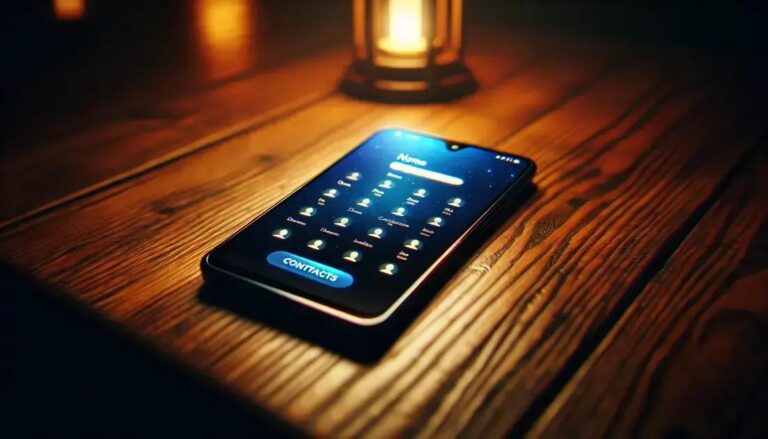Photos Were Deleted? Here’s How to Restore Them Easily
Ever deleted a photo accidentally and wished you could magically bring it back? **Recovering deleted photos from your phone** might be easier than you think! In today’s digital world, we store hundreds of photos, and losing them can feel like a small catastrophe. Let’s dive into how you can effectively recover those cherished memories without breaking a sweat.
Imagine capturing your child’s first steps or a breathtaking sunset, only to accidentally erase them. Panic sets in, right? But fret not! There are reliable methods and tools that can make photo recovery a breeze, bringing back those frames in no time. Stick around, and discover how to make photo recovery stress-free and straightforward.
Have you ever considered how photo recovery tools actually work, or which options are available to you? Whether you’re using an app or exploring built-in features, understanding the process can make all the difference. Let’s explore everything you need to know to get those pictures back where they belong—safe in your gallery!
Understanding Photo Recovery Processes
Understanding photo recovery processes is essential when you lose precious images from your phone. There are several techniques and tools available that can help retrieve your lost photos effectively.
Basic Overview of Recovery Process
Recovery typically involves scanning your phone’s storage for traces of deleted files. This is possible because when a photo is deleted, the data usually remains intact until it is overwritten by new data. Specialized software can locate these traces and restore the image.
- File System Analysis: Recovery software scans your phone’s file system to identify sectors where images might have been stored.
- Deep Scanning: If basic recovery methods fail, deep scanning utilizes advanced algorithms to reconstruct files from remaining data fragments.
- Backup Restoration: If you regularly back up your data, restoring from a backup could be the simplest recovery method available.
While the recovery process is often successful, it’s best to act quickly and avoid using your phone extensively after deletion to increase the chances of successfully recovering your photos.
Essential Tools For Recovering Photos
To recover deleted photos from your phone effectively, it’s crucial to use the right tools. There are several software and applications specifically designed for this purpose, each offering unique features to cater to different needs.
EaseUS MobiSaver
EaseUS MobiSaver is a popular choice for many. It offers a simple user interface that makes it easy for beginners to navigate. Key features include the ability to recover photos, contacts, messages, and even videos from your phone. This tool supports both Android and iOS devices and can scan your device for free before you commit to purchasing the full version.
Dr.Fone – Data Recovery
Dr.Fone is another robust option to consider. It’s compatible with over 6000 Android devices and all iOS models. Unique benefits of Dr.Fone include its high recovery rate and the ability to recover photos from both phone memory and SD cards. Users can preview files before recovery to ensure they retrieve the correct images.
DigiKam Photo Recovery
DigiKam is a less conventional choice but highly effective, especially for those who tinker with open-source software. Standout features include its extensive support for various file formats and its powerful ability to recover deleted photos from both cameras and smartphones. It’s available for free, making it a budget-friendly option.
Choosing the right tool depends on your specific needs, such as compatibility with your device and the types of files you need to recover. With these tools, recovering lost photos becomes a manageable task.
Step-By-Step Guide To Recovering Photos
Recovering deleted photos from your phone is possible with a systematic approach. Follow this step-by-step guide to ensure the best chances of retrieving your lost images.
Step 1: Stop Using Your Phone
Once you realize photos are deleted, immediately stop using your phone for any new activities. This will prevent new data from overwriting the deleted photos and increase the chances of recovery.
Step 2: Choose a Recovery Tool
Select a reliable recovery app or software. EaseUS MobiSaver, Dr.Fone, or Recuva are popular options. Ensure the tool is suitable for your device type—iOS or Android.
Step 3: Install and Connect
Download and install the chosen recovery tool on your computer. Then, connect your phone to the computer using a USB cable. Most tools will automatically detect your device and prepare it for scanning.
Step 4: Perform a Scan
Initiate the scan through the recovery tool. This process might take some time, depending on the amount of data on your phone. The software will attempt to find any recoverable files.
Step 5: Preview and Recover
Once the scan completes, the recovery tool will display a list of recoverable files. Preview the images and select the ones you want to recover. Click on the recover button to restore them to your device or save them to your computer.
Step 6: Backup Your Data
To avoid future incidents, regularly backup your photos to a cloud service or an external drive. This ensures that you can easily restore them without going through the recovery process again.
Common Mistakes To Avoid During Recovery
Avoiding common mistakes during photo recovery can significantly increase your chances of success. Knowing what not to do is just as crucial as understanding the recovery process itself.
Reusing the Device
One of the biggest mistakes is continuing to use your phone after photos have been deleted. Any new data saved to the device can overwrite the deleted photos, making them unrecoverable. It’s important to stop using the device immediately.
Ignoring Backups
Many users forget to check their backups. Whether it’s a cloud service like Google Photos or Apple’s iCloud, backups often contain copies of your photos. Before starting a recovery process, always check your backups first.
Using Unreliable Software
Not all recovery software is created equal. Some can further corrupt your data. It’s essential to use reputable tools like EaseUS MobiSaver or Dr.Fone, both of which are known for their reliability and effectiveness.
Failing to Back Up Post-Recovery
Once you’ve recovered your photos, create a backup immediately. This step ensures that photos are safe from future accidental deletions or software malfunctions. Regular backups are a loyal safeguard against data loss.
By being aware of these common pitfalls, you can avoid further data loss and improve your recovery outcomes.
FAQ – Frequently Asked Questions About Recovering Deleted Photos From Your Phone
Can I recover deleted photos directly from my phone without software?
Yes, if you have previously backed up your photos to a cloud service like Google Photos or iCloud, you can restore them without third-party software.
What is the first thing I should do when I accidentally delete photos?
Stop using your phone immediately. This will prevent new data from overwriting the deleted files, increasing the chances of successful recovery.
Are there any free tools to recover deleted photos?
Yes, some tools offer free versions with limited functionality, like EaseUS MobiSaver’s free trial. However, they may not recover all lost data without upgrading.
How do I choose a reliable recovery tool?
Look for tools with good reviews and a proven track record, like Dr.Fone or Recuva. Ensure compatibility with your device and operating system.
Is it possible to recover photos from a phone with a broken screen?
Yes, as long as the internal storage is intact, you can connect the phone to a computer and use recovery software to retrieve photos.
Can I recover photos from the SD card of my phone?
Yes, many recovery tools support SD card recovery. You can connect the SD card to a computer directly for photo recovery using compatible software.






